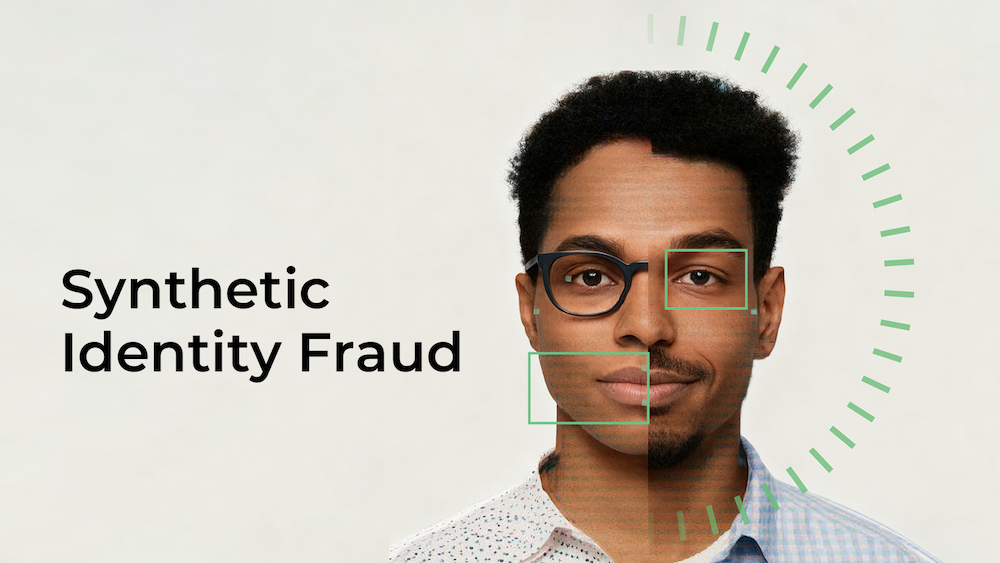Layering in Money Laundering
In the intricate dance of money laundering, layering takes center stage. Let’s delve deeper into this clandestine process:
The Mechanics of Layering
Layering typically involves several sophisticated techniques to disguise the origin of the funds. These can include:
- Multiple Bank Accounts: Opening numerous bank accounts in different names and jurisdictions to move money around, making it difficult to track.
- Shell Companies: Using shell companies to conduct transactions, adding another layer of complexity and anonymity.
- Currency Conversion: Frequently converting money into different currencies to further obscure its origin.
- High-Value Assets: Purchasing high-value assets like real estate, art, or precious metals, which can then be sold to integrate the funds back into the financial system.
- Trade-Based Money Laundering: Using trade transactions to disguise the movement of money, such as over- or under-invoicing goods and services.
Cross-Jurisdictional Challenges
One of the most effective strategies in layering is moving funds across different jurisdictions. This not only complicates the audit trail but also exploits the varying levels of regulatory scrutiny and compliance standards in different countries. For instance, a launderer might transfer money from a bank in a country with stringent anti-money laundering (AML) regulations to one with more lenient oversight, thereby reducing the risk of detection.
Technology and Layering
In the digital age, technology has added another layer of complexity to the layering process. Cryptocurrencies, for example, offer a high degree of anonymity and can be transferred quickly across borders. Online banking and financial services also provide new avenues for layering, allowing money launderers to move funds with greater speed and less physical oversight.
The Goal: Obscuring the Audit Trail
The ultimate aim of layering is to make it as difficult as possible for authorities to trace the illicit funds back to their source. By creating a convoluted web of transactions, money launderers hope to outpace the capabilities of traditional transaction monitoring systems and evade detection. This makes it imperative for businesses to adopt advanced risk and compliance measures, including sophisticated transaction monitoring and KYC verification processes, to combat these activities effectively.
In summary, layering is a critical stage in the money laundering process that involves a series of complex transactions designed to obscure the origin of illicit funds. By understanding the mechanics and techniques involved, businesses can better equip themselves to combat this pervasive issue.
Layering Techniques
Layering in money laundering involves a variety of sophisticated techniques designed to obscure the origin of illicit funds. Here are some of the most common methods used:
Currency Conversion
One of the primary techniques used in layering is currency conversion. This involves changing the laundered money from one currency to another, such as converting US dollars to UK pounds or Japanese Yen. By frequently converting the money into different currencies, launderers can create a complex trail that is difficult to follow. This method exploits the differences in regulatory scrutiny and financial systems across countries, making it harder for authorities to trace the funds.
Asset Conversion
Another common technique is asset conversion, where illicit funds are used to purchase high-value assets. These assets can include real estate properties, gold, or even casino chips. Once these assets are acquired, they can be sold or exchanged, effectively "cleaning" the money and integrating it back into the financial system. For example, a launderer might buy a luxury property and then sell it, making the proceeds appear legitimate. Similarly, purchasing gold or other precious metals offers a portable and easily convertible form of wealth.
Global Transactions
Transferring money through various accounts worldwide is another effective layering technique. By moving funds across multiple jurisdictions, launderers can exploit the varying levels of regulatory oversight in different countries. This can involve setting up bank accounts in multiple countries and transferring money between them, creating a complex web of transactions that is difficult to untangle. The use of international financial institutions and offshore accounts further complicates the audit trail, making it challenging for authorities to trace the origin of the funds.
Complex Web
Creating an intricate web of transactions is perhaps the most sophisticated layering technique. This involves conducting a series of rapid and seemingly unrelated transactions to obscure the money trail. For instance, funds might be transferred between multiple shell companies, moved through various financial instruments, or invested in different markets. The goal is to create a convoluted transactional path that is nearly impossible to follow. This can also involve the use of trade-based money laundering, where goods and services are over- or under-invoiced to disguise the movement of money.
Trade-Based Money Laundering
Trade-based money laundering (TBML) is another sophisticated technique where launderers use trade transactions to disguise the movement of illicit funds. This can involve over-invoicing or under-invoicing goods and services, falsifying the quantity or quality of goods, or using multiple trade routes to complicate the audit trail. TBML exploits the complexities of international trade and the varying levels of scrutiny applied to trade transactions, making it a highly effective layering technique.
Use of Digital Assets
In the digital age, cryptocurrencies and other digital assets have become popular tools for layering. Cryptocurrencies offer a high degree of anonymity and can be transferred quickly across borders with minimal oversight. Launderers can convert illicit funds into cryptocurrencies, move them through various digital wallets, and then convert them back into fiat currencies or other assets. This adds another layer of complexity to the money trail, making it difficult for traditional financial monitoring systems to detect.
By understanding these common layering techniques, businesses can better equip themselves to identify and combat money laundering activities. Advanced transaction monitoring systems, robust KYC verification processes, and continuous risk and compliance efforts are essential in detecting and preventing these sophisticated schemes.
Post-Layering and AML Processes
After successfully navigating the layering stage, criminals enter the post-layering phase, where they plan to reintroduce the "cleaned" money into the legitimate economy. This stage, known as integration, involves making the illicit funds appear as though they have been legally earned, allowing criminals to enjoy their ill-gotten gains without raising suspicion.
The Post-Layering Phase
In the post-layering phase, the laundered money is integrated into the financial system through various legitimate channels. This can include investments in businesses, purchasing luxury goods, or making high-value financial transactions. The goal is to make the money appear as though it has come from legitimate sources, thereby completing the money laundering cycle. For example, a criminal might invest in a legitimate business, purchase real estate, or make large deposits into personal bank accounts, all of which can be explained as proceeds from legitimate activities.
AML Processes to Combat Post-Layering Transactions
To combat the reintroduction of laundered money into the economy, businesses and financial institutions employ a range of Anti-Money Laundering (AML) processes. These measures are designed to detect and prevent suspicious activities, ensuring that illicit funds do not enter the legitimate financial system.
Transaction Monitoring
Continuous surveillance of financial activities is a cornerstone of AML efforts. Transaction monitoring systems are designed to track and analyze financial transactions in real-time, identifying patterns and anomalies that may indicate money laundering. These systems use advanced algorithms and machine learning to flag suspicious activities, such as unusually large transactions, rapid movement of funds between accounts, or transactions involving high-risk jurisdictions. By continuously monitoring financial activities, businesses can detect and respond to potential money laundering activities before they escalate.
Customer Due Diligence (CDD) and Enhanced Due Diligence (EDD)
Verifying customer identities is another critical component of AML processes. Customer Due Diligence (CDD) involves collecting and verifying information about customers to ensure they are who they claim to be. This includes verifying identification documents, assessing the customer's risk profile, and understanding the nature of their business relationships. Enhanced Due Diligence (EDD) goes a step further, applying additional scrutiny to high-risk customers and transactions. EDD may involve more in-depth background checks, ongoing monitoring of customer activities, and additional verification steps to ensure compliance with AML regulations.
Suspicious Activity Reports (SAR)
Reporting potentially suspicious transactions is a legal requirement for financial institutions and businesses. Suspicious Activity Reports (SAR) are filed with regulatory authorities when a transaction or series of transactions raises suspicion of money laundering or other illicit activities. SARs provide detailed information about the suspicious activity, including the nature of the transaction, the parties involved, and any relevant supporting documentation. By filing SARs, businesses contribute to the broader effort to combat money laundering, providing authorities with the information they need to investigate and take action against criminal activities.
The post-layering phase is a critical stage in the money laundering process, where criminals attempt to integrate their illicit funds into the legitimate economy. By employing robust AML processes, including transaction monitoring, CDD and EDD, and filing SARs, businesses can effectively combat post-layering transactions and prevent money laundering activities. These measures are essential for maintaining the integrity of the financial system and ensuring compliance with regulatory standards.
Introducing TrustDecision's KYC++
In the fight against money laundering, robust Know Your Customer (KYC) processes are essential. TrustDecision's KYC++ offers an advanced, integrated identity verification suite designed to enhance the effectiveness of AML efforts. Combining document verification, biometrics authentication, and device checks, KYC++ provides a comprehensive solution to ensure compliance and mitigate risks.
Device Fingerprinting
One of the standout features of KYC++ is its advanced device fingerprinting capability. Utilizing a global database of over 7 billion devices, this feature helps detect and mitigate risks associated with account takeovers and fraudulent activities. By uniquely identifying devices and monitoring their behavior, businesses can identify suspicious activities and prevent unauthorized access.
High Data Accuracy
KYC++ is designed to deliver high data accuracy, employing robust anti-spoofing measures to prevent the use of altered or fake documents. This ensures that the verification process is reliable and that only legitimate customers are granted access. The platform's advanced algorithms and machine learning capabilities continuously improve the accuracy of the verification process, providing businesses with confidence in their compliance efforts.
Global Coverage
TrustDecision's KYC++ offers extensive global coverage, supporting 12,500 document types from 247 countries and 138 languages. This wide-ranging support ensures that businesses can verify the identities of customers from virtually anywhere in the world. Whether dealing with local or international clients, KYC++ provides the tools needed to maintain compliance with global regulatory standards.
TrustDecision's KYC++ is a powerful tool in the fight against money laundering, offering an integrated suite of identity verification features that enhance compliance and mitigate risks. With advanced device fingerprinting, high data accuracy, and extensive global coverage, KYC++ equips businesses with the capabilities they need to effectively combat money laundering and ensure the integrity of their financial operations. By adopting TrustDecision's KYC++, businesses can stay ahead of evolving threats and maintain robust AML practices.

.jpeg)












